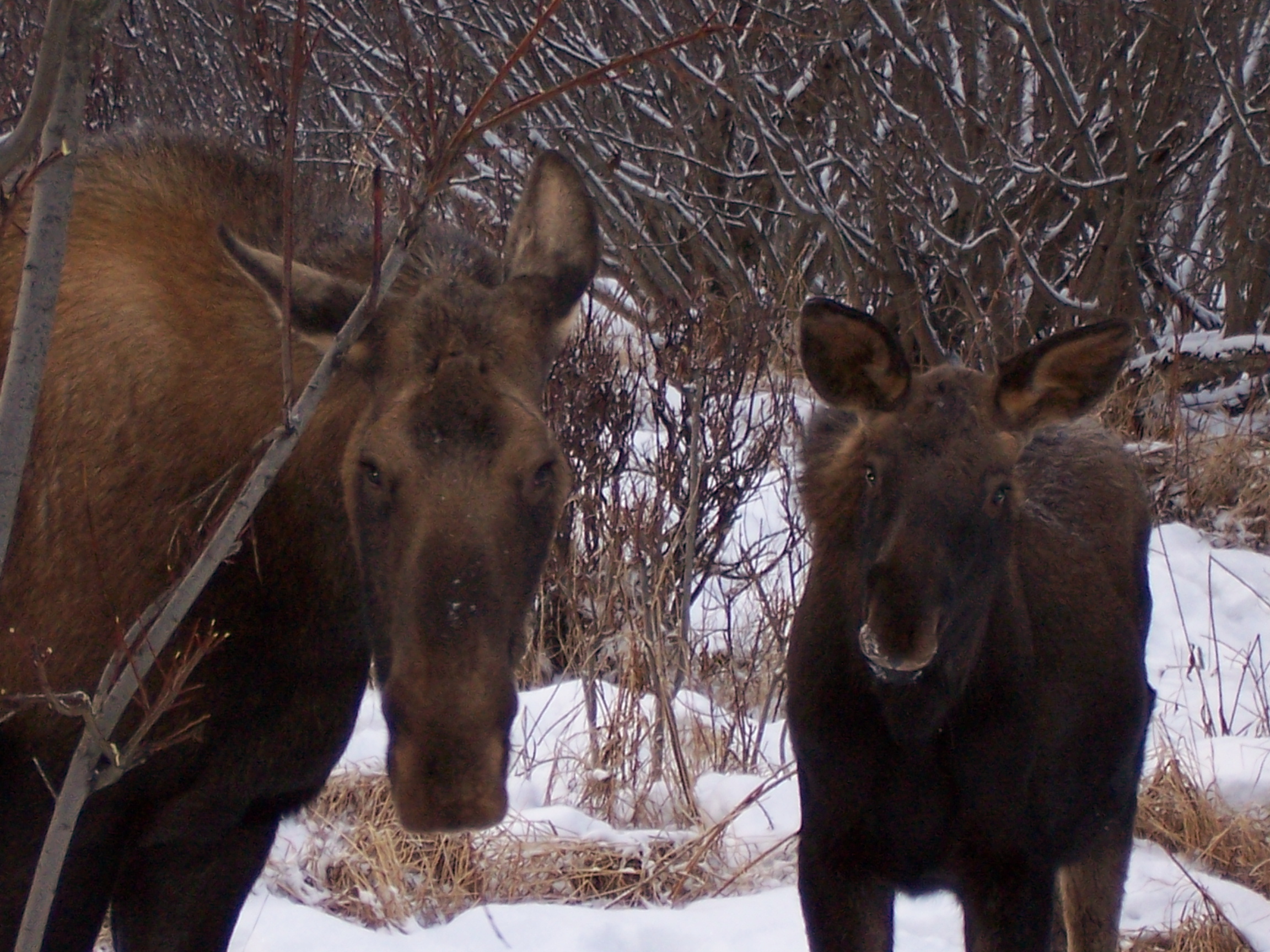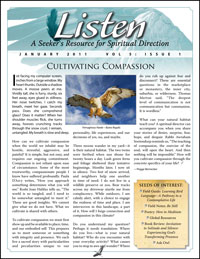
I sit facing my computer screen, inches from a large window. My heart thunks. Outside a shadow moves. A moose peers at me. Vividly tall, she is furry, sturdy, six feet away, eyes glued in stillness. Her nose twitches. I catch my breath, meet her gaze. Seconds pass. Does she comprehend glass? Does it matter? When her shoulder muscles flick, she turns away, hooves crunching tracks through the snow crust. I remain, untangled. My breath is slow and deep.
How can we cultivate compassion when the world we inhabit may be hostile, stressful, aggressive, and painful? It is simple, but not easy, and requires our ongoing commitment. Compassion is not reliant upon ease of circumstance. Some of the most trustworthy, compassionate people I know have suffered profoundly. Paula D’Arcy writes, “How you approach something determines what you will see.” Roshi Joan Halifax tells us, “The world is so tangled, and I need to be somewhat untangled to meet it.” These are good insights. We cannot give what we do not have. What we cultivate is shared with others.
To cultivate compassion we must first show up and be available to place, time, and our embodied self. This prepares us to meet someone or something with integrity and presence. We each live a sacred story with particularities and peculiarities unique to our personality, life experiences, and our decisions of yes, no, and maybe.
Three moose wander in my yard—it is their natural habitat. The two twins were birthed when sun shone for twenty hours a day. Lush green ferns and foliage sheltered their tentative beginnings. Months later, I now sit in silence. Two feet of snow arrived, and neighbors help one another in time of need. I do not live in a wildlife preserve or zoo. Bear tracks across my driveway startle me from complacency. While outdoors, I am calmly alert, with a choice to engage the realness of time and place. I am interwoven in this landscape, a part of it. How will I forge connection and compassion in this climate?
Do you understand my question? Perhaps it needs translation: Where do you live—what is your natural habitat? Who do you encounter with your everyday activity? What causes you to stop in awe and wonder? Where do you rub up against fear and disconnect? These are essential questions in the marketplace or monastery, the inner city, suburbia, or wilderness. Thomas Merton said, “The deepest level of communication is not communication but communion. It is wordless.”
What can your natural habitat teach you? A spiritual director can accompany you when you share your stories of desire, surprise, fear, hope, and despair. Rabbi Awraham Soetendorp reminds us, “The teaching of compassion, the exercise of the soul, will open the heart. And then nothing will be impossible.”
How do you cultivate compassion through the concrete specifics of your life?
–Pegge Bernecker, editor





